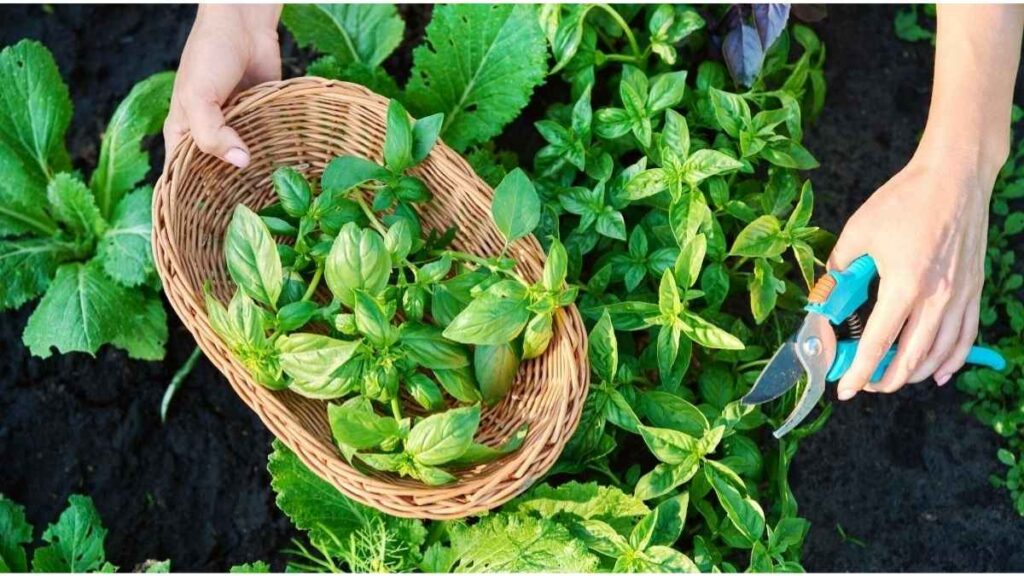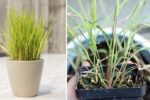Basil is one of the most beloved herbs in the garden, loved for its fresh aroma and versatility in cooking. But as the temperature begins to drop, basil plants struggle to survive the cold. Many gardeners assume basil is a summer plant only, but with the right care and preparation, you can protect it through winter and have a lush, thriving harvest in spring. Winterizing basil isn’t difficult; it just requires a bit of planning and attention. Here’s how you can do it.
Understanding Basil’s Sensitivity to Cold
Basil is a tender annual herb that loves warmth and sunlight. Once temperatures drop below 50°F (10°C), the plant starts to suffer, and frost can kill it overnight. This means gardeners in colder regions must act before the first frost arrives. Understanding your local frost dates is essential, as it helps you plan when to start preparing your basil for the colder months. If left exposed, basil leaves will turn black and wilt quickly, so timing is everything.
Bringing Basil Indoors Before Frost

One of the simplest ways to save your basil for spring is to bring it indoors. Before frost hits, check your basil plants and choose the healthiest ones to transfer. Gently dig them up, keeping as much of the root system intact as possible. Place the plants in pots with good-quality, well-draining soil. Water them lightly and let them adjust to the indoor temperature gradually. A bright windowsill or a sunny spot in your home where they can receive at least six hours of light daily is ideal. If natural light is limited, consider using a grow light to keep them healthy.
Pruning for Health and Growth

Pruning is one of the most important steps in winterizing basil. Trim the plants before bringing them inside to reduce stress and encourage new growth. Cut back any damaged or diseased leaves, and pinch off the flowering tips to help the plant focus its energy on survival rather than seed production. Regular pruning during winter also prevents legginess, which is common when basil doesn’t get enough light. A compact, bushy plant will grow stronger and adapt better once spring returns.
Adjusting Watering and Feeding Routine
Basil doesn’t need as much water in winter as it does in the summer. Overwatering is one of the most common mistakes gardeners make when keeping basil indoors. Allow the top inch of soil to dry out before watering again. Make sure the pot has drainage holes to prevent waterlogging, which can cause root rot. Feeding should also be reduced during this time. Use a diluted liquid fertilizer once a month at most. The goal is to keep the plant alive and healthy, not to push rapid growth during the dormant season.
Using Cuttings to Multiply Basil Plants

If your outdoor basil plants are too large or not suitable for transplanting, take stem cuttings instead. This is an excellent way to preserve your favorite variety through winter. Cut four to six-inch sections of healthy stems just below a leaf node. Remove the lower leaves and place the stems in a glass of water, keeping them in a warm spot with indirect sunlight. Change the water every few days to prevent bacteria buildup. Within two weeks, roots should start to form. Once the roots are an inch or two long, transfer the cuttings into small pots with fresh soil. These new basil plants can thrive indoors all winter and be moved outside when spring arrives.
Creating the Right Indoor Environment
Basil thrives in warmth and light, so replicating these conditions indoors is crucial. Keep your indoor basil plants away from cold drafts, windows that frost over, or heating vents that can dry them out. The ideal temperature range is between 65°F and 75°F. Humidity is another factor dry indoor air can stress the plant. To maintain moisture levels, mist your basil occasionally or place the pot on a tray filled with water and pebbles to create natural humidity. A small humidifier nearby can also help.
Overwintering Basil Outdoors in Mild Climates

If you live in a region with mild winters, it might be possible to keep basil outdoors with some protection. Choose a sheltered spot that gets plenty of sunlight during the day. Cover the plants with a frost cloth or garden fleece when temperatures are expected to drop. Mulching around the base with straw or leaves helps insulate the roots from sudden temperature changes. Keep in mind that even with these precautions, basil remains vulnerable to frost, so you may still need to take cuttings as a backup plan.
Managing Pests and Diseases Indoors
Indoor plants can attract pests such as aphids, spider mites, or whiteflies, especially when air circulation is poor. Check your basil regularly and rinse the leaves gently if you spot any insects. You can also use a natural insecticidal soap or neem oil spray to control infestations. Avoid overcrowding plants and make sure they get enough airflow. Healthy indoor conditions not only prevent pests but also reduce the risk of fungal diseases, which can develop when humidity is too high or leaves stay wet for too long.
Preparing Basil for Spring Transition

As the days start getting longer and temperatures rise again, begin preparing your basil for the transition back outdoors. Start by moving the pots outside for a few hours each day to help them acclimate gradually to natural sunlight and temperature changes. This process, called hardening off, prevents shock when the plant returns to the garden. Once the danger of frost has completely passed, transplant your basil into the garden or larger pots with fresh, nutrient-rich soil. Resume regular watering and feeding, and within weeks, you’ll see your basil bursting with new growth.
Enjoying a Fresh Start in Spring
Winterizing basil is more than just a way to protect your plants; it’s a chance to extend their life and get a head start on your spring garden. Whether you bring entire plants indoors, take cuttings, or protect them outdoors in mild climates, the effort pays off with an early and abundant harvest. When spring returns, your basil will already be established and ready to produce fragrant, flavorful leaves once again. With a little winter care and attention, your basil can thrive year after year, rewarding you with the taste and aroma of summer long before the season begins.
Final Thoughts
Winter may seem like the end of your basil’s growing season, but it can actually be the beginning of a stronger, more resilient plant. By giving your basil the protection it needs during the cold months, you ensure that it comes back vigorous and ready to produce once temperatures rise. The process doesn’t require much just a bit of pruning, care, and the right environment. With consistent attention, you’ll not only preserve your basil but also multiply it for future harvests. When spring finally arrives, you’ll be rewarded with a thriving herb that’s ready to infuse your dishes with fresh, homegrown flavor.



